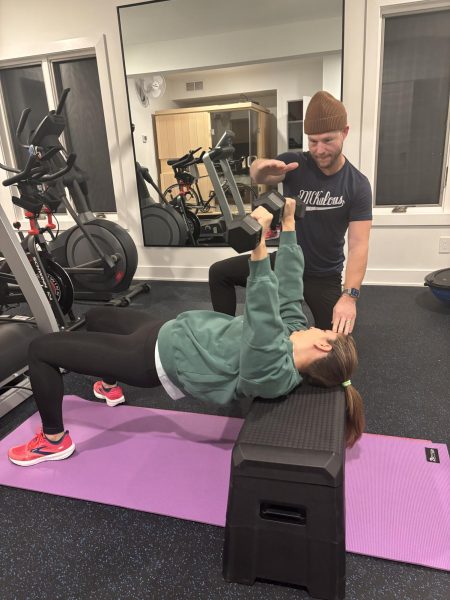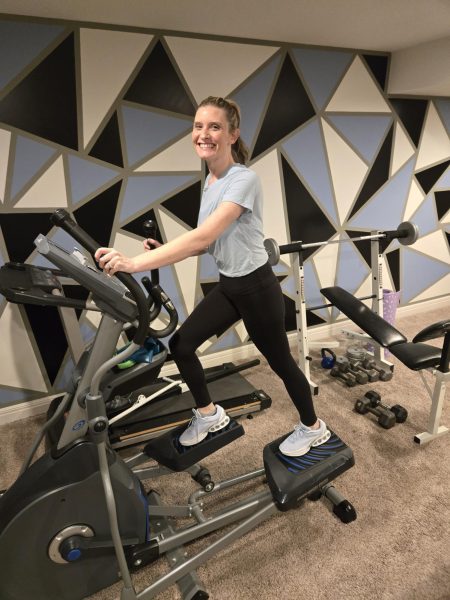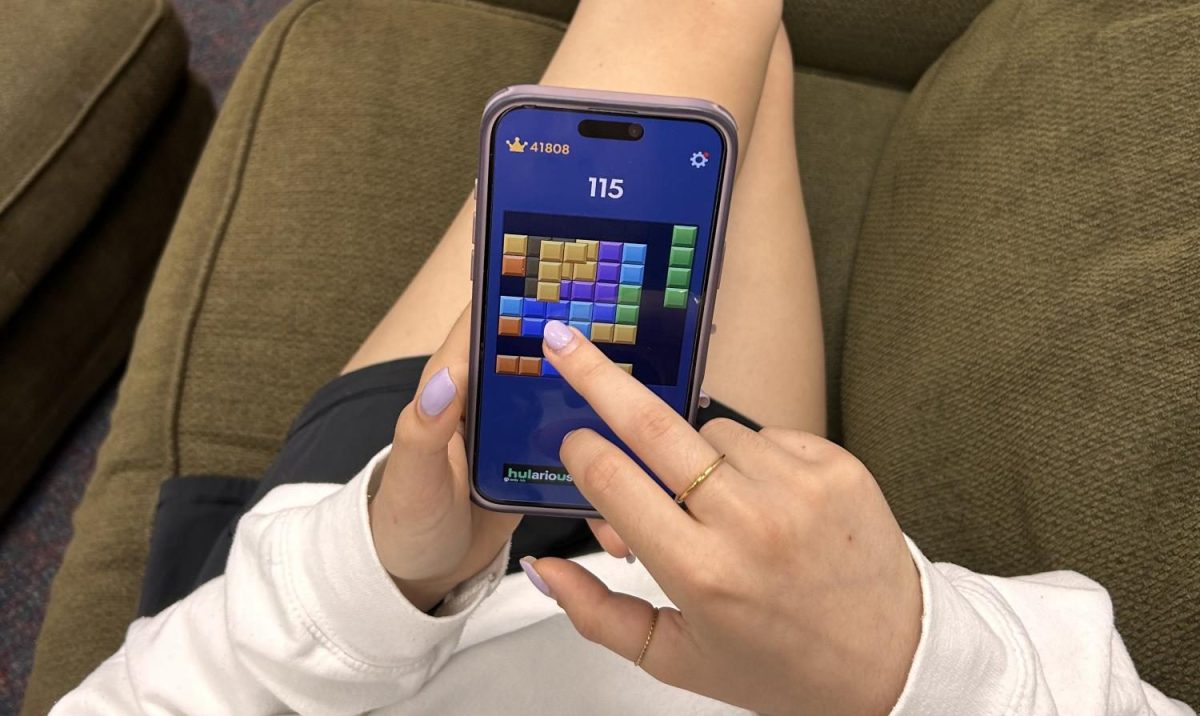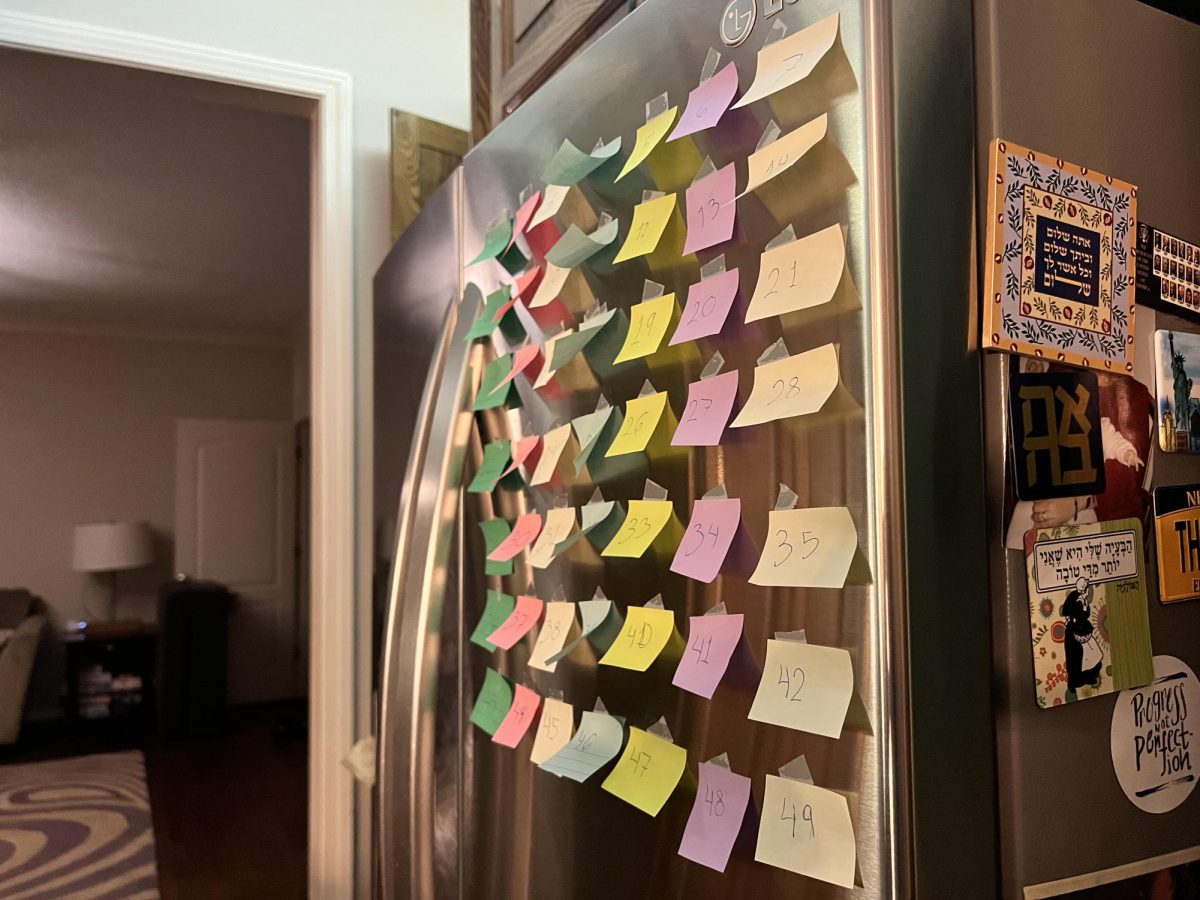People have always been conscious of their bodies. Now more than ever exercise, smart eating habits, and living a healthy lifestyle are more than a personal choice. It is trendy to wear overpriced athleisure brands and go to bou·gie workout places, and make sure you post about it. These factors are the impact and formation of the recent wellness revolution and obsession.
The rise of social media has caused the form of exercise to shift. The relevance of living a healthy lifestyle has increased. Nick Stoppel, owner of RiNickulous Fitness LLC said, “People in general have always been conscious of their bodies.” Along with that, people have always been aware of taking care of themselves, but the difference now is “we have more resources to expedite that process.”
Since 2013, Stoppel has worked as a personal trainer. Stoppel said women are “a bit more self-motivated [than men].” The motivation of women can tie into the trends of women’s fashion, and the difference in what women versus men prefer to post online.

“Fitness at the core is relatively simple, … [and] the movements haven’t changed,” Stoppel said. Once the internet became a resource for exercise and health, more workouts and movements have proliferated. Increasing the teenage desire to be a part of the picture-perfect healthy lifestyle.
Workouts like strength training and pilates were previously less common for the general public, especially for women. Shannon Baker, an ophthalmic technician in Prairie Village, Kan., over the last three years has “buckle[d] down and got[ten] serious about” her physical health.
“I think my children probably would be the number one [influence],” Baker shared. Over time, Baker stopped putting in the time to exercise. When her children were getting older, she “wanted to try to be a good example for them” so they did not repeat the same mistakes to their bodies as she did. It was important for her to teach her teenagers to prioritize and know the importance of being active and staying healthy.
When Baker was a teenager, “Cardio was really a big focus … and watching your calories,” she shared. The cardio obsession has decreased, and it has become known as an integrated workout or warm-up. Or at least that is what you are finding on TikTok’s For You page.
Both workout routines and nutrition habits have evolved over time. Baker grew up counting calories, but now, “the focus for food is not so much about the calories or even fat. It’s more about the quality of the food,” she said. Online, people are constantly posting unprocessed meals and at-home workouts for all eyes to see.

The popularity of posting about a workout or other health benefits comes with posting the newest overpriced athleisure brand. Jennifer Smith, a licensed acupuncturist and yoga instructor in New York City. said, “I feel like the fashion really influences people, they’re dressed like this all the time, so they can [easily] squeeze in a workout.” When the current fashion trends are telling people to wear high-end brands like Lululemon and Alo Yoga, and “just dropping the jeans,” people are constantly ready “to get into working out,” Smith shared.
Smith worked at big wellness clubs. While she was on the job, Smith noticed “people of any sort of caliber and any sort of financial situation … made sure that they were scraping up every penny so that they can go to [an elevated] setting of working out.” People started to prefer attending “either [a] private [session], SLT (Strength, Lengthen, Tone), or something of like a higher caliber,” she said.
To all ages and socio-economic groups, there is a feeling of status while exercising in a luxurious place. Smith said since the influencers were posting themselves in fancy gyms, regular people started to put “all their money into a more aesthetic experience.”
This lifestyle opposes Stoppel’s experience with exercising when he was a child and teenager. “Working out was focused towards whatever sport you were playing, or you wanted to play,” Stoppel said. He even went on to say, someone who “just wanted to work out … was a little strange.”

In the small rural town Stoppel grew up in, the only gym they had was the school gym. The people who did work out had medical motivation to be healthy. Unlike a big percentage of the teenagers who live at the gym.
Dasha Sandomirsky, a freshman at Tulane University, is a committed gym lover. In her sophomore year of high school, Dasha started lifting weights and using workouts she found on TikTok after she ended her swim career. “I just love how it makes me feel to work out, and I stayed consistent by staying disciplined to myself,” Sandomirsky said.
Sandomirsky agrees with Smith that having cute workout sets helps keep people motivated. As the fit queen she is, Sandormirsky is aware of the many health hoaxes online. “There’s a lot of fake stuff online … that’s … unnecessary because it’s just putting so much stress on your body, so I would say just get into it (working out) slowly and have fun with it,” Sandomirsky advises.
Being a teenager during the time of an online world full of unrealistic and edited picture-perfect lives, the “key is to have self-love,” Baker said. It is impossible to have a continuously flawless routine. All you can do is use the abundance of resources online to your advantage, and hope the health trend never dies.















